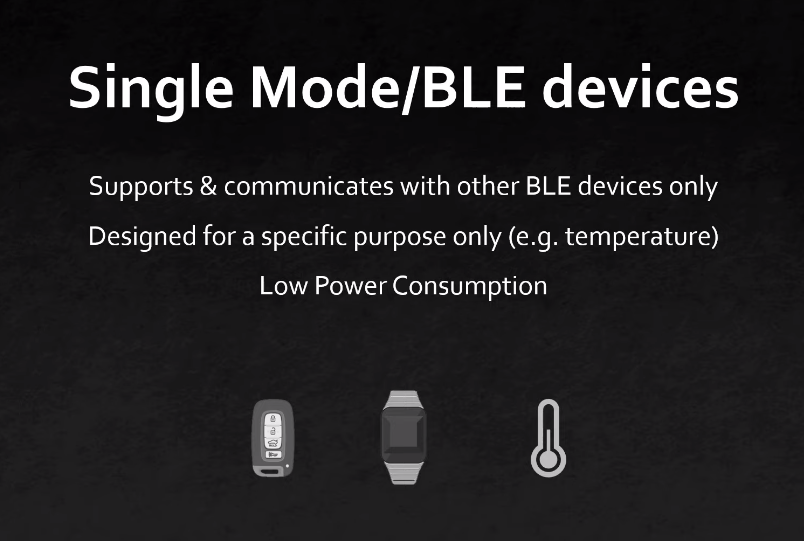Introduction
Explanation Of Bluetooth Technology And Its Uses

Bluetooth technology is a type of wireless communication that has been around for decades. It allows devices to connect and exchange data over short distances, making it an essential tool for many applications. Bluetooth operates through radio waves, which are transmitted between devices using specific frequencies. These frequencies carry information like audio, video, or other data types.
Bluetooth uses encryption protocols to secure the transmission of data between devices. This means that any information exchanged over a Bluetooth connection cannot be easily intercepted by unauthorized parties.
However, it should be noted that the level of encryption used by Bluetooth can vary depending on the version of the technology being used and how it’s implemented in different devices. For example, some older versions may have weaker encryption than newer ones. Bluetooth technology remains a secure way to transfer data wirelessly over short ranges while still providing reliable connectivity and seamless integration with various electronic devices such as smartphones or smart home systems.
Overview Of Bluetooth Security Concerns

The convenience of Bluetooth comes with some security concerns. One of the major security risks associated with Bluetooth is eavesdropping. If someone intercepts your Bluetooth connection, they can access your personal information, including text messages, emails, and other sensitive data.
Another common Bluetooth security risk is Bluejacking, which occurs when an attacker sends unsolicited messages or files to a vulnerable device. Bluejacking can lead to various forms of attacks like phishing and malware injection. Additionally, attackers may use unsecured Bluetooth connections to launch denial-of-service (DoS) attacks against devices.
Importance Of Bluetooth Data Encryption
Bluetooth data encryption ensures that sensitive information transmitted between devices cannot be intercepted by unauthorized parties. Encryption involves converting plain text into cipher text using complex algorithms to protect data from being read or accessed by third parties. Without encryption, hackers can intercept and access confidential information such as bank details, passwords, or personal identification numbers (PINs). Bluetooth encryption ensures that this information is protected during transmission.
Moreover, Bluetooth data encryption protocols have evolved over the years to provide better security features. For example, version 4.2 introduced LE Secure Connections which uses elliptic curve cryptography (ECDH) to generate a shared key for secure communication between devices.
Understanding Bluetooth Technology
Types Of Bluetooth Connections

There are three types of Bluetooth connections: Classic Bluetooth, Bluetooth Low Energy (BLE), and Bluetooth Dual Mode. Classic Bluetooth is the original technology that has been around since 2000. It is a high-speed connection that can transfer large amounts of data quickly. However, it consumes more power than BLE and has a shorter range.
On the other hand, BLE was introduced in 2010 as a low-power alternative to Classic Bluetooth. It is designed for devices that only need to transfer small amounts of data, such as fitness trackers or smartwatches. BLE consumes less power than Classic Bluetooth and can operate for months or even years on a single battery charge.
There’s also the dual mode which combines both technologies into one chip so devices can communicate with both classic and low-energy modes. This allows for greater compatibility between different types of devices.
Bluetooth Communication Protocols
The basic principle behind Bluetooth technology is that it uses short-range radio waves to establish a connection between two or more devices. The data transfer occurs over different frequencies depending on the specific device and its capabilities. The range of Bluetooth connectivity can vary from a few meters up to 100 meters depending on the version of Bluetooth being used.
Bluetooth Security Mechanisms
Pairing Process

Pairing allows two Bluetooth-enabled devices to establish a secure communication link and exchange data wirelessly. During the pairing process, the two devices establish a shared secret key that they will use to encrypt all subsequent communications.
The security of this shared key is paramount, as it prevents unauthorized access to sensitive information being transmitted between the devices. That’s why modern Bluetooth implementations employ robust encryption algorithms like AES-128 or AES-256, which are virtually unbreakable using current technology.
However, attackers can still exploit vulnerabilities in the implementation or human error during the pairing process to compromise the security of Bluetooth communications. For instance, using weak or easily guessable passkeys can expose your device to brute-force attacks that can eventually reveal your private data.
Authentication And Encryption Protocols
The encryption protocols are designed to scramble the data being transmitted between devices so that it cannot be easily intercepted by hackers. In addition to encryption, Bluetooth also uses authentication protocols to ensure that only authorized devices can connect and transmit data.
There are different levels of security provided by Bluetooth encryption protocols depending on the version of Bluetooth being used. Older versions like Bluetooth 2.0+EDR use a weaker form of encryption compared to newer versions like Bluetooth 5.1 which use more robust encryption algorithms for enhanced security.
Bluetooth Security Level (BSL)
Bluetooth Security Level (BSL) is a measure of the security strength used to protect Bluetooth-enabled devices from unauthorized access. The BSL ranges from 0 to 4, with level 0 having no security measures in place and level 4 being the highest level of protection. Each device has its own BSL, and it determines how secure the connection is between two paired devices.
While Bluetooth technology uses encryption to protect data during transmission, the degree of encryption depends on the BSL. A higher BSL means that more robust encryption algorithms are used, making it harder for hackers to intercept or eavesdrop on transmitted data. It is important to note that lower levels of BSL may still be useful for some applications where security risks are minimal.
Security Features In Bluetooth 4.0 And Later Versions
Bluetooth 4.0 and later versions come with enhanced security features to protect users from potential attacks. One of the most significant improvements in Bluetooth security is encryption. Bluetooth 4.0 introduced a new encryption algorithm known as Secure Simple Pairing (SSP), which uses public key cryptography to create a secure connection between two devices.
Another important security feature that comes with Bluetooth 4.0 and later versions is random frequency hopping, which helps prevent eavesdropping by making it difficult for attackers to intercept data transmitted over Bluetooth. This means that even if someone were to sniff out a portion of the encrypted data, they would not be able to use it since they would not have access to the entire message.
Bluetooth 4.2 introduced another layer of protection called LE Privacy Features, which provides additional security when using low-energy connections between devices such as fitness trackers and smartwatches.
Bluetooth Encryption Types
Symmetric Encryption
Symmetric encryption uses a single key to both encrypt and decrypt the data, making it faster than asymmetric encryption. The key used in symmetric encryption must be kept secret as it is the only way to access the encrypted data. This makes symmetric encryption vulnerable to attacks if the key falls into the wrong hands.
To ensure secure communication between Bluetooth devices, symmetric encryption is commonly used alongside other security measures such as authentication and authorization. When two devices are paired, they exchange a pre-shared secret key that is used for future communications. This ensures that only authorized devices can communicate with each other.
Asymmetric Encryption
In Bluetooth technology, asymmetric encryption can be used for device authentication, key exchange, and secure communication between paired devices. When two Bluetooth devices are paired with each other, they use a unique pairing code to authenticate their identities before exchanging sensitive data. Asymmetric encryption ensures that only the intended recipient can read the message by using its private key to decrypt the message.
Asymmetric encryption provides better security than symmetric encryption because it eliminates the need for a shared secret between two parties while maintaining the confidentiality and authenticity of data exchanges.
Hybrid Encryption
Hybrid encryption is a type of encryption that combines the benefits of both symmetric and asymmetric encryption methods. It is widely used in Bluetooth technology to secure the transmission of data between devices. In hybrid encryption, a unique key is generated for each session, which is then used to encrypt the data using symmetric encryption. The key itself is encrypted using asymmetric encryption and sent along with the encrypted data to the receiver. Only the receiver, who possesses the private key needed to decrypt this message can access it.
Bluetooth technology uses hybrid encryption as one of its security measures to protect against unauthorized access or eavesdropping on sensitive information being transmitted between devices.
Bluetooth Encryption Algorithms
Overview Of Bluetooth Encryption Algorithms
There are several types of encryption algorithms used in Bluetooth technology, including the E0 algorithm, which was introduced in the first version of Bluetooth. This algorithm uses a 128-bit key to encrypt data during transmission. Another commonly used encryption protocol is the AES (Advanced Encryption Standard) algorithm, which uses a 128-bit or 256-bit key to encrypt data.
Block Ciphers
Block ciphers are a type of symmetric encryption algorithm that operates on fixed-length blocks of data. They rely on a secret key to encrypt and decrypt messages, ensuring confidentiality and integrity. One popular block cipher is the Advanced Encryption Standard (AES), which is used in many applications, including Bluetooth technology.
Stream ciphers
Unlike block ciphers that encrypt fixed-sized blocks of text, stream ciphers work on individual bits or bytes of data, making them more efficient and suitable for real-time communication applications. One common implementation of stream ciphers in Bluetooth is the RC4 (Rivest Cipher 4) algorithm, which generates a pseudorandom keystream to mask the plaintext.
However, stream ciphers have faced security concerns in recent years due to their vulnerability to attacks. In 2015, researchers discovered a flaw in RC4 that allowed attackers to exploit weaknesses in the cipher’s key schedule and predict parts of the keystream with high accuracy. As a result, many experts now recommend using alternative encryption methods like AES (Advanced Encryption Standard) instead.
Vulnerabilities in Bluetooth Security
Bluejacking
Bluejacking is a type of cyber attack that exploits the security vulnerabilities of Bluetooth technology. It involves sending unsolicited messages to nearby Bluetooth-enabled devices, such as smartphones or laptops, without the knowledge or consent of their owners. Bluejackers leverage the short-range wireless communication capabilities of Bluetooth to send messages containing spam, phishing links, or malware.
One of the main reasons why Bluejacking is possible is due to the lack of encryption in Bluetooth data transmission. Unlike other wireless technologies such as Wi-Fi, which use encryption protocols like WPA2 to protect data from eavesdropping and interception, Bluetooth uses weaker encryption methods that are more susceptible to hacking attempts. This makes it easier for cybercriminals to intercept Bluetooth signals and gain access to sensitive information such as contacts, text messages, or emails.
Bluesnarfing
Bluesnarfing is a type of cyber attack that occurs when a hacker gains unauthorized access to a Bluetooth-enabled device and steals sensitive information such as contacts, messages, and even call records. This happens because some Bluetooth devices are not configured with proper security settings which makes them vulnerable to attacks. Once the hackers have accessed the device, they can quickly transfer data without leaving any trace.
Bluebugging
Bluebugging is a form of hacking that exploits the security vulnerabilities in Bluetooth technology. The attacker can gain unauthorized access to the victim’s device and control it remotely without the knowledge of the user. It is a serious security threat as it allows hackers to steal sensitive information such as contacts, and messages, and even make calls from the victim’s phone.
Man-In-The-Middle Attacks
Man-in-the-middle attacks (MITM) are a type of cyberattack that intercepts communication between two parties to steal data or impersonate one party. Bluetooth technology is susceptible to MITM attacks, which can compromise the security of personal and sensitive information shared through the platform. Attackers can use various tactics such as eavesdropping, session hijacking, or message alteration to gain unauthorized access to Bluetooth devices.
Countermeasures Against Bluetooth Vulnerabilities
Keep software and firmware updated. Manufacturers regularly release updates that address known security flaws and bugs in their products. Users should apply these updates promptly to prevent attackers from exploiting known vulnerabilities.
Disable unnecessary features like file sharing or device discovery when not in use. Attackers can exploit these features by sending malicious files or pairing requests to hijack devices and access confidential data.
In addition, users can protect themselves by using strong passwords or PINs for their Bluetooth devices. Weak passwords are easy targets for attackers who may attempt brute-force attacks to guess them. By using complex passwords or PINs, users can make it harder for attackers to gain unauthorized access to their devices’ content.
Bluetooth Security Best Practices
Strong Passwords And Passphrases
A strong password typically includes a mix of upper- and lowercase letters, numbers, and symbols, making it difficult for anyone trying to guess or crack it. However, an even more secure option is using a passphrase instead. A passphrase is essentially a long password made up of multiple words strung together, such as “correct horse battery staple.” This type of password can be easier for individuals to remember while still offering enhanced security.
Use of trusted devices and connections
Trusted devices are those that have been verified as safe and secure by the user themselves or a software system. This could include a smartphone, tablet, laptop, or other device that has been paired with a Bluetooth-enabled device in the past without any issues. By only connecting to these trusted devices, users can reduce the risk of unauthorized access or data breaches.
Similarly, using trusted connections means ensuring that the connection itself is secure and free from interference or interception by hackers. This can be achieved through various methods such as using secure passwords for pairing, ensuring both devices have up-to-date firmware updates installed, and avoiding connecting to public Wi-Fi networks when sharing sensitive information over Bluetooth.
Regular Updates Of Firmware And Software
Without regular firmware and software updates, your device may be vulnerable to attacks that could compromise your personal information or data.
Firmware updates are responsible for updating the programming that controls a device’s hardware. They often include security patches designed to address known vulnerabilities in the Bluetooth protocol. On the other hand, software updates update a device’s operating system or applications installed on it. These updates often include new features as well as bug fixes.
Use Of Bluetooth Security Apps
There are several Bluetooth security apps available on both iOS and Android platforms that can help protect your device.
One such app is BlueGuardian, which monitors all incoming and outgoing Bluetooth connections and alerts you if an unauthorized connection is detected. Another useful app is Bluetooth Firewall, which allows you to create rules for incoming and outgoing Bluetooth connections based on specific criteria. For example, you can block all incoming connections unless they are from trusted devices.
Frequently Asked Questions
Can Bluetooth Encryption Be Hacked?
The encryption method used by Bluetooth is called E0, which provides a level of security that can withstand most hacking attempts. This encryption method uses a stream cipher technique that assigns each bit with a unique keystream, making it almost impossible for hackers to crack.
However, there have been instances where Bluetooth technology has been hacked. Hackers have found ways to exploit vulnerabilities in Bluetooth technology, such as the BlueBorne attack discovered in 2017. This attack exploited flaws in the implementation of Bluetooth on various devices and allowed attackers to take control of them remotely.
What Is The Difference Between Bluetooth And Wi-Fi Security?
Bluetooth technology has often been considered less secure than Wi-Fi. One of the reasons is that Bluetooth devices typically have a shorter range compared to Wi-Fi networks, meaning that attackers need to be physically closer to the device to intercept data. However, this does not necessarily mean that Bluetooth technology is unsecured.
Bluetooth technology uses encryption algorithms just like Wi-Fi networks do. The level of encryption can vary depending on the type of Bluetooth device and its version; however, all modern versions use strong encryption methods such as AES-128 or higher.
Can Bluetooth Devices Be Tracked?
Although it is technically possible to track a Bluetooth device, this doesn’t mean that every Bluetooth connection is inherently insecure. Many newer Bluetooth-enabled devices use encryption to protect data transfers between paired devices. This makes it much more difficult for hackers or cybercriminals to intercept sensitive information transmitted via Bluetooth.
However, despite encryption being available on some newer devices, not all manufacturers implement this technology in their products. Additionally, even if encryption is utilized in the initial pairing process between two devices, once paired the data may no longer be encrypted during subsequent connections which leaves room for potential exploitation by attackers.
How To Secure Bluetooth Devices?
Enable encryption. Bluetooth encryption ensures that data transmitted between connected devices is protected from interception by unauthorized parties. It is important to note that not all Bluetooth devices support encryption, which means one should confirm compatibility before establishing a connection.
Turn off visibility mode after pairing with a device. Visibility mode allows other users within range to detect your device for pairing purposes; however, it also increases vulnerability since it exposes your device’s identity and makes it easier for attackers to target it.
Always keep your device software up-to-date since manufacturers regularly release security patches and updates that address vulnerabilities discovered in their products’ previous versions. Updating software reduces the chances of an attacker exploiting known weaknesses within the system.
Conclusion
Bluetooth technology has been a game-changer in the world of wireless communication. It has revolutionized the way we connect and share information between devices. However, with this convenience comes security concerns.
One of the most pressing questions about Bluetooth is whether or not its data is encrypted. The answer is yes – Bluetooth data is encrypted using a variety of encryption protocols to protect against eavesdropping and other malicious attacks. This includes pairing encryption, which secures the initial pairing process between two devices, and link encryption, which encrypts data as it’s transmitted between devices.
